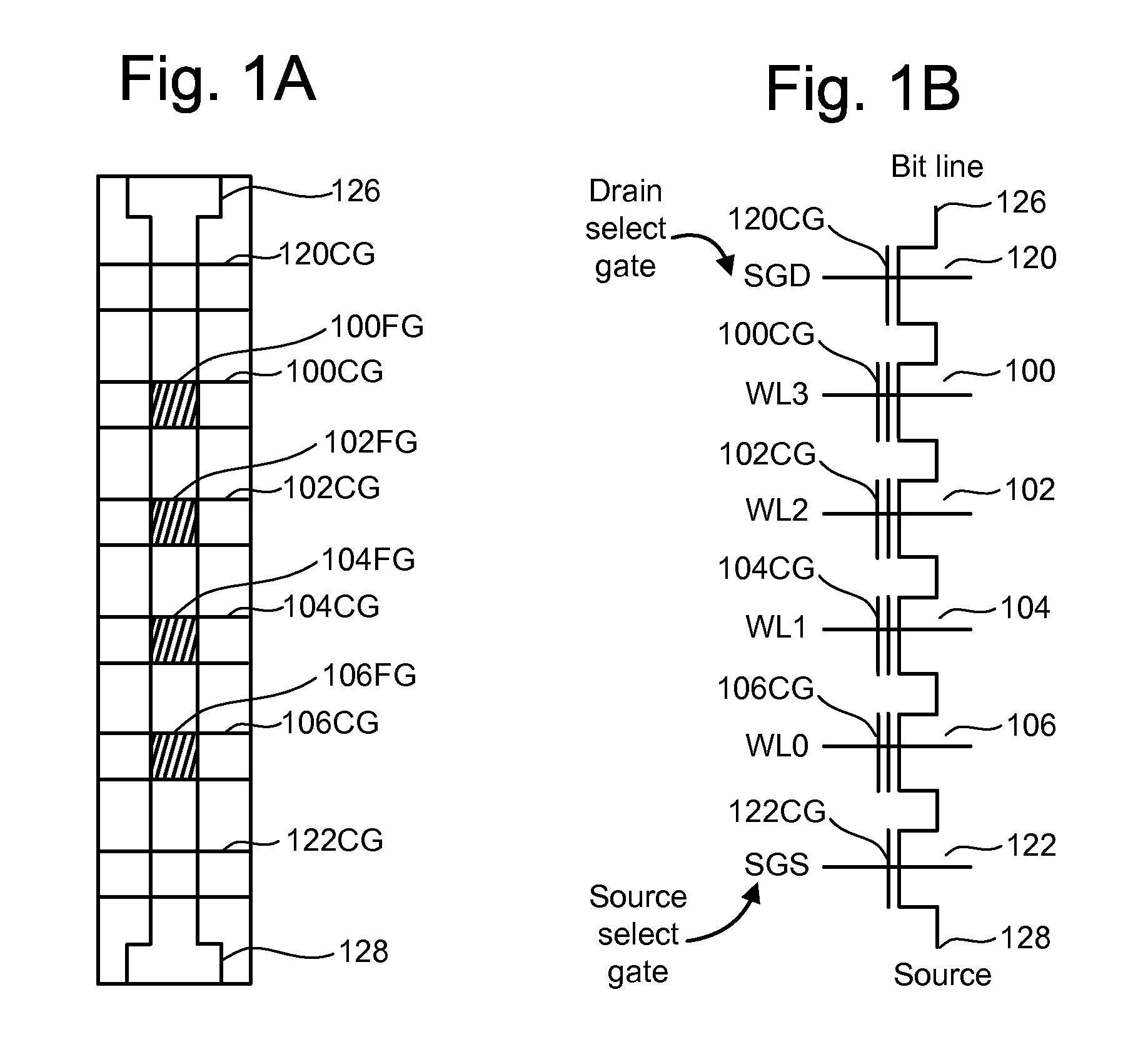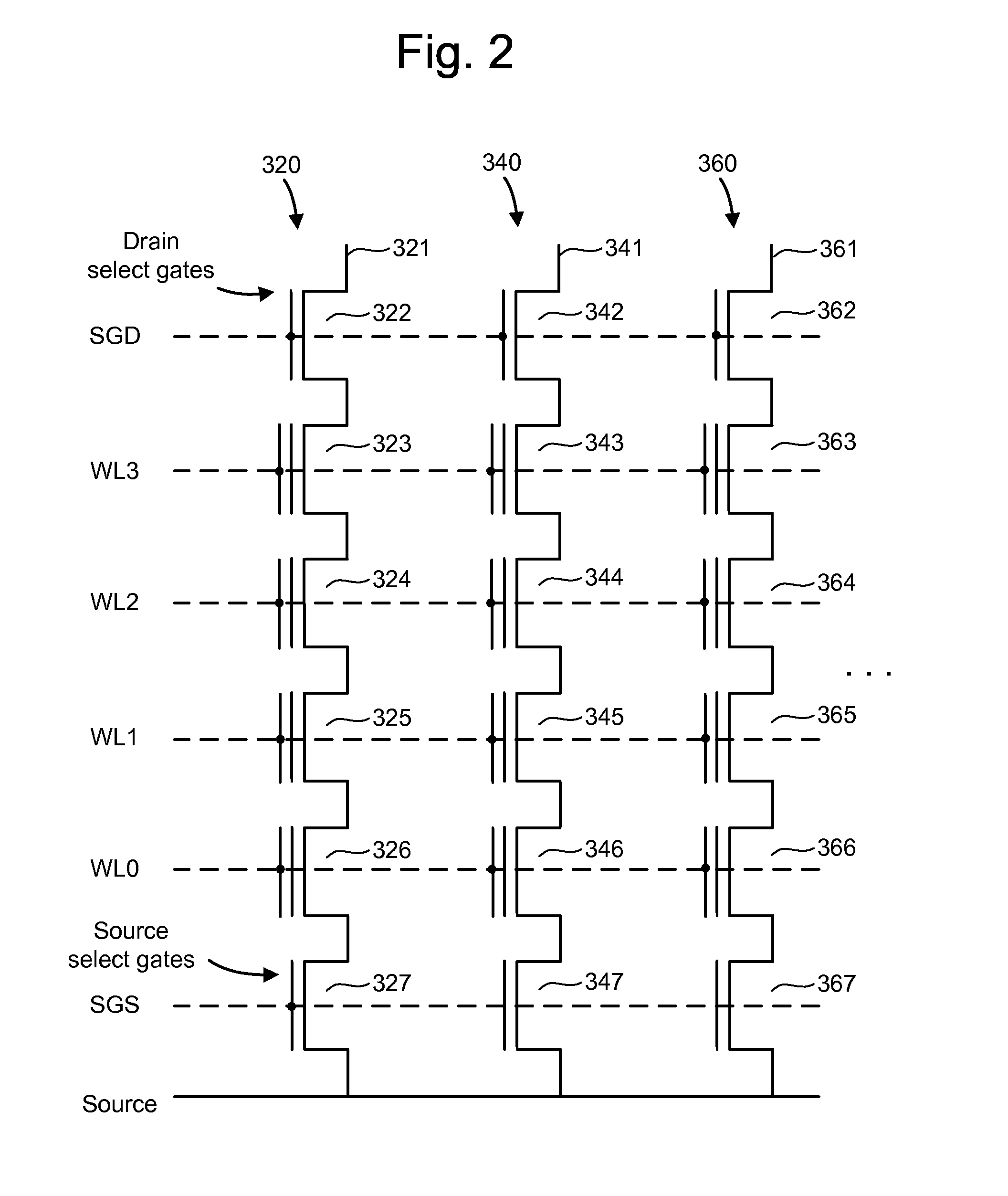Program condition dependent bit line charge rate
a bit line charge rate and program condition technology, applied in static storage, digital storage, instruments, etc., can solve the problems of large current, chip size penalty, and memory device performance impairmen
- Summary
- Abstract
- Description
- Claims
- Application Information
AI Technical Summary
Benefits of technology
Problems solved by technology
Method used
Image
Examples
Embodiment Construction
[0028]The present disclosure provides methods and devices for operating non-volatile storage. In some embodiments, the rate at which inhibited (or unselected) bit lines are charged depends on a program condition. In one embodiment, the program condition is the number of program loops that have completed. In one embodiment, the program condition is completion (or nearly completion) of programming a certain program state. In one embodiment, the bit lines are charged at a faster rate prior to the program condition occurring than after the program condition. In one embodiment, the bit lines are charged at a slower rate prior to the program condition than after the program condition.
[0029]In one embodiment, the rate at which inhibited bit lines are charged depends on which program loop is being performed. During the earlier program loops, the inhibited bit lines may be charged at a slower rate, which may reduce peak current consumption. During later program loops, the inhibited bit lines...
PUM
 Login to View More
Login to View More Abstract
Description
Claims
Application Information
 Login to View More
Login to View More - R&D
- Intellectual Property
- Life Sciences
- Materials
- Tech Scout
- Unparalleled Data Quality
- Higher Quality Content
- 60% Fewer Hallucinations
Browse by: Latest US Patents, China's latest patents, Technical Efficacy Thesaurus, Application Domain, Technology Topic, Popular Technical Reports.
© 2025 PatSnap. All rights reserved.Legal|Privacy policy|Modern Slavery Act Transparency Statement|Sitemap|About US| Contact US: help@patsnap.com



